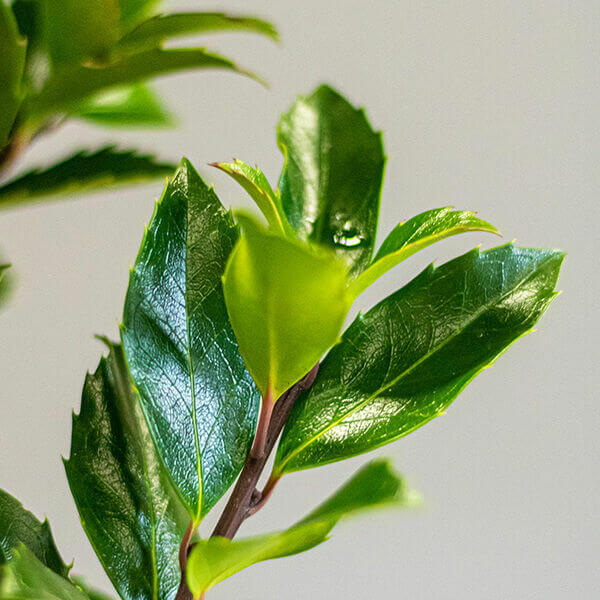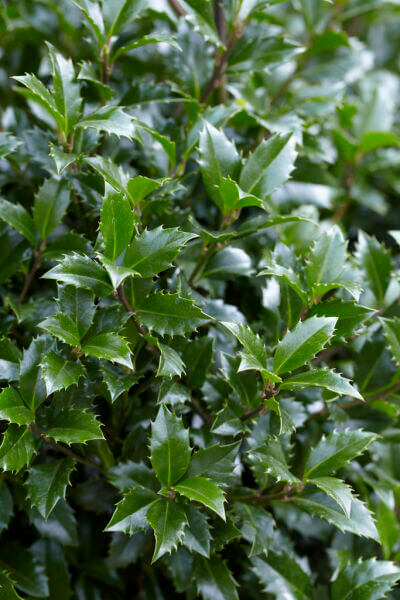Best Hedging Plants For Leaf Color
Best Hedging Plants For Leaf Color
Blog Article
Low-maintenance Hedging Plants
Boost your garden's attraction with rich hedge ranges such as Yew (Taxus), Thuja, Laurel, Photinia, and Bamboo, celebrated for their structural stability and ecological benefits.
Yew and Thuja supply evergreen coverage and winter season strength, while Laurel offers quick growth and broad, fragrant leaves.
Photinia includes seasonal charm with its dynamic red foliage, and Bamboo provides a low-maintenance, peaceful atmosphere.
These hedges enhance air quality, decrease sound, and develop tranquil, private areas.
Correct planting, spacing, and maintenance guarantee energetic development and environmental consistency.
Check out how these lavish varieties can elevate your garden's charm and wellness.
Secret Takeaways
Transform Your Garden With Lush Hedge Varieties
- Select Yew for its thick, evergreen growth and exceptional durability.
- Go with Laurel for its quick growth and broad leaves, ensuring quick privacy.
- Select Photinia for its lively seasonal foliage, which turns a striking dark red.
- Use Bamboo for a low-maintenance, winter-hardy hedge with visual appeal.
- Area plants 2-3 per meter and prune frequently for ideal development and health.
Popular Hedge Plants
When changing a garden with lavish hedge ranges, it's important to consider popular hedge plants such as Yew, Thuja, Laurel, and Photinia due to their unique attributes and advantages.
Yew (Taxus) is extremely esteemed for its durability and dense, green growth, making it a prime choice for enduring landscapes.
Thuja is noted for its evergreen foliage and robust winter resilience.
Photinia includes seasonal vibrancy with red leaves that darken over time, developing vibrant visual appeal.
Laurel uses quick development and aromatic, broad leaves, suitable for fast privacy.
In Addition, Bamboo is an excellent option for atmosphere, offering a low-maintenance, winter-hardy alternative that boosts the garden's visual with its classy, swaying walking canes.
These choices accommodate a variety of horticultural needs and choices.
Advantages of Garden Hedges
Garden hedges provide a wide range of benefits, making them an important addition to any landscape. These natural barriers are cost-efficient to carry out and offer considerable wind protection, boosting air flow and contributing to sound reduction. The thick foliage of hedges like Thuja and Beech guarantees privacy by blocking exposure, creating a tranquil and remote environment.
Hedges also play a crucial function in microclimate regulation, providing a steady environment that promotes plant development and lessens temperature changes. Their intricate leaf structures filter toxins, improving air quality and adding to a healthier garden community.
Additionally, hedges stand out in noise decrease, absorbing and deflecting acoustic waves to lower ambient noise levels. This dual performance of providing both acoustic and visual privacy improves the overall harmony and aesthetic appeal of any garden.
Planting and Maintenance Tips
For an effective hedge, precise preparation of the planting location is important. Ensure the soil has appropriate pH and drain to support strong root advancement.
Space the plants properly for the chosen types. Water the hedge often throughout its initial growth stage, adjusting as required with seasonal modifications.
Execute a organized bug control and disease avoidance technique, utilizing chemical or natural treatments when essential. Regularly inspect for aphids, mites, and fungal infections.
Apply mulch to keep wetness and reduce weeds. Seasonal pruning promotes thick development and air circulation, essential for plant health.
Following these guidelines will help you cultivate a dynamic, properly maintained hedge that boosts the beauty of your garden.
Spacing and Trimming Guidelines
Spacing and Trimming Guidelines
Proper spacing and trimming are crucial for cultivating healthy, visually appealing hedges. Adequate spacing ensures each plant receives sufficient nutrients, light, and airflow.
Follow these guidelines for ideal hedge maintenance:
- Spacing: Position hedge plants 2-3 plants per meter to encourage robust growth.
- Pruning Techniques: Regular pruning is essential for maintaining wanted hedge height and shape. Cut brand-new development in summertime and cut back older wood throughout winter season.
- Seasonal Care: Change trimming schedules and techniques according to seasonal requirements to make sure plant health.
- Hedge Height: Frequently display and cut to preserve the desired hedge height and achieve consistent looks.
Complying with these actions will guarantee your hedge prospers, improving both the appeal and functionality of your garden.
Choosing the Right Hedge
Choosing the Right Hedge
Picking the suitable hedge involves evaluating aspects such as mature height, foliage density, and environmental strength. Successful hedge plant selection needs understanding each types' development characteristics and site-specific flexibility.
For instance, Yew (Taxus) offers exceptional longevity and dense development, while Thuja is notable for its winter season resilience. In addition, considering upkeep requirements is important; fast-growing types like Laurel or Privet demand routine trimming, whereas low-maintenance alternatives like Bamboo or Ivy might be more effective for those seeking very little upkeep.
Ecological factors such as soil type, light accessibility, and wetness conditions must also direct the choice process. This mindful approach guarantees the chosen hedges will flourish, providing both practical and aesthetic advantages to the garden landscape.
Shipment and Planting Guidance
To guarantee your hedge plants thrive, they ought to be provided by specialized carriers and planted quickly upon arrival.
Follow these vital actions for successful planting:
- Soil Preparation: Enhance the soil with raw material to improve drainage and nutrient material.
- Planting Depth: Develop a trench twice the width and equal to the depth of the root ball.
- Watering Methods: Water completely after planting, keeping the soil regularly moist but not saturated.
- Mulching: Apply a layer of mulch to keep wetness and reduce weeds.
Customer Support and Service
Given the essential function of prompt help in horticultural pursuits, our client assistance group is available six days a week through telephone, email, and social media to offer skilled recommendations and promptly address any concerns. Their dedication to quick response times ensures customer satisfaction by dealing with inquiries associated with plant health, ideal planting techniques, and maintenance schedules.

----------------------
Within 24 hours
This thorough support system, reinforced by an outstanding 9.3/ 10 client score, highlights our dedication to boosting the gardening experience for every single client.
Frequently Asked Questions
How Long Does It Take for Hedge Plants to Establish?
Hedge plants typically require one to three years to become completely established, with the exact duration varying by species and growing conditions.
Effective care throughout this critical period is vital for robust development. Constant watering, watchful weed control, and suitable fertilizer application are essential in promoting strong root advancement.
For instance, fast-growing species like Laurel may establish faster, while slower-growing ranges such as Yew may take longer. Persistent upkeep accelerates the establishment process, leading to thick and healthy hedges.
What Are the Finest Hedge Plants for Personal Privacy?
The question of the very best hedge plants for privacy includes assessing evergreen and deciduous choices.
Evergreen hedges like Thuja, Laurel, and Cypress provide year-round protection, making sure continuous privacy.
On the other hand, deciduous hedges such as Beech provide seasonal privacy, shedding leaves in colder months.
Secret maintenance tips for personal privacy hedges include regular trimming, fertilizing in spring, and correct spacing-- generally 2 to 3 plants per meter.
Additionally, constant watering and persistent weed removal are vital for promoting healthy, thick growth.
Can Hedge Plants Bring In Wildlife to My Garden?
Yes, hedge plants can attract wildlife to your garden by supplying important advantages like shelter, food, and nesting sites, thereby improving regional biodiversity. For example, yew, holly, and laurel are exceptional for drawing in birds, while ivy supports a range of bugs.
Nevertheless, it is very important to keep in mind that there are some drawbacks, such as increased upkeep to manage bugs and regular maintenance. Thoroughly choosing and keeping hedge varieties can assist stabilize these drawbacks and advantages, ultimately cultivating a vibrant and sustainable environment in your garden.
Are There Any Flowering Hedge Plants Available?
Yes, there are flowering hedge plants readily available that can boost the beauty of your garden.
For example, Elaeagnus, likewise called Olive Willow, produces fragrant white flowers in the fall, including a touch of elegance.
Photinia, another popular option, showcases vibrant red leaves that develop into a rich green, producing a dynamic visual result throughout the seasons.
To ensure these plants flourish, it's important to practice proper pruning strategies and seasonal maintenance, such as trimming brand-new development in the summer season and cutting down in the winter.
These measures will help preserve the health and visual appeal of your blooming hedges.
How Do I Avoid Bugs in My Hedge Plants?
To avoid bugs in hedge plants, use natural pest control methods and maintain proper hedge care. Introduce helpful pests like ladybugs, which prey on harmful pests, to create a balanced ecosystem.
Regularly inspect your hedges for indications of problem and promptly remove any affected parts read more to prevent the spread. Ensure the health of your hedges by using well balanced fertilizers and supplying sufficient water.
Use mulching to keep soil moisture and appropriate spacing to decrease plant stress and promote robust growth. These practices jointly assist in lessening insect issues and maintaining a healthy hedge.
Conclusion
In essence, picking the ideal hedge ranges such as Yew, Thuja, and Laurel can transform any garden into a tranquil sanctuary. These plants offer year-round greenery, enhance visual appeal, and offer practical advantages like sound reduction and wind protection.
Correct planting methods, accurate spacing, constant watering, and seasonal trimming are vital for optimum growth.
Reputable delivery services and skilled customer support make sure a seamless experience from purchase to planting, making it simpler than ever to elevate your outside space.
Garden hedges offer a plethora of benefits, making them an important addition to any landscape. These natural barriers are economical to implement and supply significant wind defense, enhancing air blood circulation and contributing to noise decrease. The dense foliage of hedges like Thuja and Beech guarantees privacy by obstructing presence, producing a remote and peaceful environment.

Pruning Strategies: Routine pruning is important for maintaining wanted hedge height and shape. Cut new development in summertime and cut back older wood during winter season.
Report this page